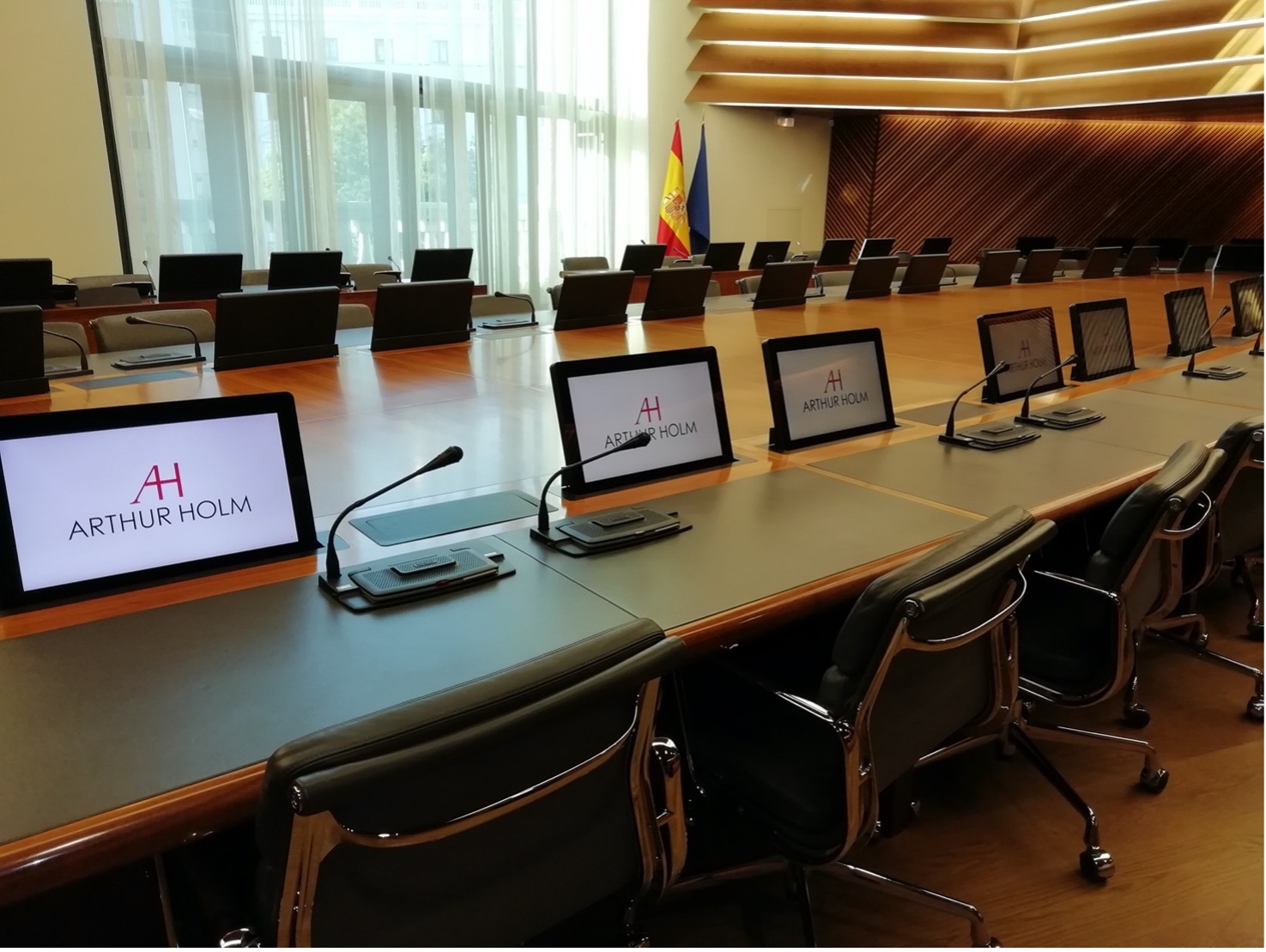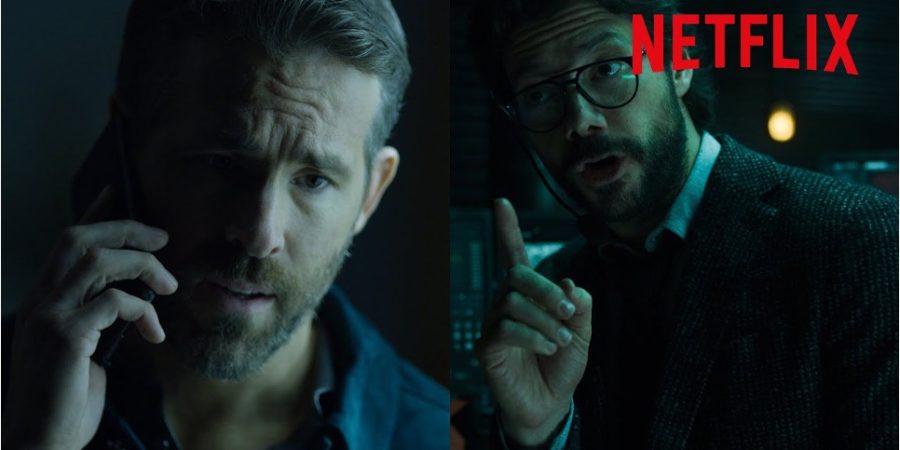Well, the first thing that probably comes to mind is that they are both on Netflix? Or maybe you remember the promotional “crossover” video in which One calls from Italy to The Professor in Madrid? Let’s re-cap; One asks The Professor to lend him a couple of his people, (Tokyo and Denver) for a job, to which The Professor agrees, but then responds with a request for him to have 4 and 7. One is indignant and sarcastically asks: “Oh well why don’t I throw in 2 and 5 as well, as they’re not doing anything!” Eventually they agree a deal. Finally, One asks when can they meet for dinner, for The Professor to reply with a dismissive “keep dreaming”…
Wrong! It’s not that!
What they have in common is that both the conference spaces in the crisis room in Abu Dhabi, and the Bank of Spain in Madrid have installed Arthur Holm’s motorized retractable monitors!
In Abu Dhabi, the monitors of choice are Dynamic3 and DynamicX2 while in Madrid it’s the DynamicX2.

In both rooms, strategic, rapid and far-reaching decisions have to be made. And that means they need the support of the very best technology. Crisis rooms (“war rooms”), control rooms, command centres, meeting and conference rooms… You can imagine the president of a country, an institution or a company, surrounded by their trusted people, supported by technology that provides up-to-date information on an emergency situation. The president has to make the right decision, with no time to lose.
In crisis scenarios, the rooms are used to tackle an extreme situation or a specific problem and secure communication with efficient and fluid workflows are vital. These are rooms designed to assess and visualise risks or emergencies within a country, a state or even a company, and their objective is for users to make decisions quickly, safely and efficiently.
The room should be equipped with technology capable of providing fast and direct communication, should encourage teamwork and collaboration, and provide real-time information in a highly secure environment. The table should be custom-designed, with the capacity to host a variable number of participants, and should include the necessary elements for optimal decision making; from connectivity to display screens and microphones. The space is designed to monitor and make decisions on emergencies in real time and must be ready to communicate decisions immediately. It must also consider factors like reliability, safety, flexibility, comfort, ergonomics and usability.
The monitors are not just passive elements; they are critical, visible components of a complex signal management process. Through these monitors, real-time information is displayed for remote, rapid, comprehensive and efficient decision-making, that incorporates video conferencing, networking and interaction protocols between different teams. Decision-makers require optimal working conditions, that allow them to focus on their mission, and prompt decision making to avoid potential serious and costly consequences.

Although we can’t deny that we like the robbers in the series, we hope that our monitors help the Bank of Spain make the best decisions.
And thank you very much for having faith in us for so many years!
